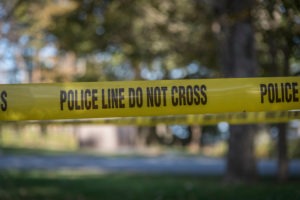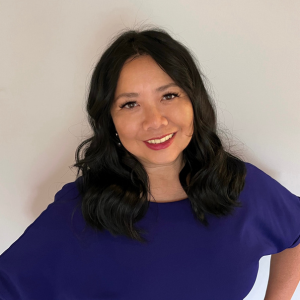The snapshot: Recording a thousand words’ worth of evidence
In the first part of this series in the October issue, we looked at the reasons to use photography in long-term care investigations and the tools required to capture the scene. Now that you have secured your photography equipment and know how to use it, you are ready to examine photographic composition.
Understanding Photographic Composition Timing
The investigator must photographically document the event at the earliest practical point and with the least possible amount of disturbance to the scene. Upon discovery of the event and assuredly once the investigator arrives, nothing at the scene is to be moved unless it is for resident or staff safety. A good “all staff training” will teach the importance of protecting the scene. Remember that everything at the scene has a possible contribution to the investigation. Alternatively, if it is necessary to move an item, photograph it immediately and document why it was necessary to move or remove it, e.g., broken glass to prevent future injuries. Using this rule, investigative personnel can later state with certainty that the images depict the scene exactly as it was at the time of their arrival. As noted, there are reasonable exceptions to this rule. Along with safety issues, there may be a need to provide medical treatment to injured persons. Since treatment introduces associated items (e.g., bandage wrappings) that were not present when the event occurred, the investigator should note these exceptions in the narrative description of the scene and support the narrative with photographs.
Photographic Depictions
Items moved, removed, or introduced. Photograph the scene as found: This rule applies to all scenes. If something was moved before the investigator arrived, do not immediately place the item back into its appropriate position for photographic purposes. First, photograph the item in its new location. Then, place the object in its original position as described by the person who moved it and take another photograph. If an object was moved prior to the arrival of the investigator, photograph it in its new location. Then place the object in its original position as described by the person who moved it and take another photograph. (Again, good staff training will prepare staff members for these situations.) Note this in the photo log and on the sketch of the scene.
People at the scene. Do not include people in photos, unless the event occurred outside and there is a crowd. Then take a few pictures of the crowd. Photographs provide a visual record of the scene and evidence as found. They should not need verbal support.
Panoramic photographs. When photographing the scene, adhere to the NSEW (north, south, east, and west) model. Using a wide-angle lens, start at the entry point of the room (scene). Then, just as points in a compass, move around the scene to capture all reasonable vantages. Some investigators actually use a compass when photographing outdoor scenes, but within structures the four corners of the space are entirely appropriate. Take the photos from an eye-level perspective. It is important to show the scene as a witness might have observed it. This will help to show if a witness’s view was clear or obstructed.
The purpose of panoramas is to capture the entire scene with a slight overlap from image to image. Digital cameras allow for review of each perspective before moving to the next to ensure that the overall scene is captured.
Immediate area photographs. A second set of photos capturing the immediate area of the event (the actual scene) may be necessary. This places the event in context and provides the orientation of pieces of evidence. Take a second set if the event occurred outside or within a larger area such as one corner of a large dining room. For example, in the dining room, photograph the entire room, and then photograph the smaller area of the actual event to place it within accurate context.
Item-specific photographs. Once panoramic and immediate area photos have been taken, capture individual relevant items close up, with and without scale (See Nursing Homes/Long Term Care Management October 2007, p.32). Scale means to show relative size. The unscaled photograph can be used as a reference or may be needed if a court or hearing objects to the use of the selected scaling device. For example, if a resident slipped on a substance, take a photo of the substance. Conversely, if a patient slipped for no apparent environmental reason, photographically document the lack of substances.
Take close-up photographs from a distance of approximately 5 feet or less. Close-ups will give greater detail to specific objects and depict items that could not be adequately seen from the two previous ranges and items that need specific documentation.
When photographing specific objects or residents’ physical conditions, first take unscaled photos and then take them using a scale (see figure) to show distance and size relationships. Scale means to show relative size. The unscaled photograph can be used as a reference or may be needed if a court or hearing objects to the use of the selected scaling device.
Document residents’ physical conditions or specific objects by photographing unscaled, then using a scale like the one pictured above
Understanding Photographic Limitations
Photographs show the relationship of evidence to the scene, which may help in uncovering the cause of the event. They also help to establish the chain of custody of the evidence. But photography does have limitations:
A single photo cannot show an entire scene.
Photographs are two-dimensional and do not show accurate distances between objects. Here, the use of measuring instruments to show scale is helpful.
Irrelevant details may be present in photographs. It is advisable to document why particular items are not pertinent to the event.
Photos can fail to show concealed details, which is why close-ups are essential. Example: A panoramic view may not reveal a glass under the bed.
Always draw a sketch of the scene to use in conjunction with photographs. Do this after taking the photographs. The sketch can be used to show the elements of the scene that the photos were unable to capture. Together they will present a complete view of the scene.
Documenting Photographic Evidence
Taking the photograph is only the first step in documenting evidence.
Where possible, affix a label to each piece of evidence or place the evidence in a labeled container.
Number each image and cross-reference it on an investigation log.1
Enter on the physical evidence record,1 specific to the photographic evidence, the location at the scene of the evidence photographed, the time and date the picture was taken, any unusual conditions at the scene that would effect the picture, and any specifics relating to the “what, when, where, who, and how” of the event.
This format for documenting evidence will be quite useful in showing the investigator’s professionalism if the event should ever be brought to court.
Retaining Photographic Images for Your Records
One of the greatest advantages of digital photography is that images can be electronically stored. Each investigation must have its own DVD or other storage device; i.e., an investigative file appropriately labeled and kept in a dedicated, locked investigation cabinet. Label the storage device or file to indicate the date/time of the event, the nature of the event, and the identity of the photographer/investigator. Consider this device an official record and secure it in a manner that would allow access by only authorized personnel.
Devise a method that documents when and why the storage device or file was accessed once it was secured, and who did this. If access is needed during the ongoing investigation, document this in the investigation log. This process helps support the chain of custody for the evidence.
Each facility should have written policies and procedures for examining any part of an investigation’s material once the investigation is complete. Failure to properly maintain the security of your records could jeopardize their value in future legal or administrative proceedings.
Conclusion
Following these simple rules, in conjunction with the investigative techniques presented in the book Investigations in Long Term Care Facilities: Implementing a Standardized Model, by Niki L. Rowe and Michael Amo (Vendome Group, LLC, 2006), will help in properly handling events.
Photography is a powerful investigative tool; it supports and enhances the investigator’s observation skills and memory. The proficiency of photo selection—and making sense of all the possible information in a photograph—matures with experience and with the development of the skills of how “to think like an investigator.”
Photography will geometrically improve the quality of investigations. Those investigators demonstrating appropriate use of this tool will:
enhance the professional reputation of the facility,
minimize or negate unwarranted or fictitious claims,
assert and demonstrate compliance with oversight regulations,
ensure staff and resident confidence in the quality of investigations, and
augment credibility with state survey agencies.
Photography has been an integral part of investigations for decades, and it is exciting to see the Center for Medicare & Medicaid Services recognizing this tool for surveyors. Facilities can take the next step by using photography to enhance the quality of their own investigations. Remember, “a picture is worth a thousand words.”
Michael Amo, MS, CNHA, is founder of and a principal in the healthcare consulting firm, The Amo Group, LLC, created to help LTC organizations and facilities implement improvement strategies regarding abuse prevention and prohibition.
Kenneth T. Jones currently serves as the Undersheriff in the Orange County (New York) Sheriff’s Office and has taught criminal investigation at SUNY Sullivan for 20 years. He is retired from the New York State Police, where he served in a Forensic Crime Scene Unit and attended more than 100 homicide scenes in addition to other crime scenes. He is an adviser to The Amo Group, providing a forensic investigation overview to issues within LTC facilities.
Niki Lee Rowe, MA, CALA, is a Principal in The Amo Group. She is licensed in the state of New York as a mental health counselor and is a nationally certified assisted living administrator.
To send your comments to the authors and editors, e-mail amo1107@nursinghomesmagazine.com.
Reference
- Rowe NL, Amo M. Investigations in Long-Term Care Facilities: Implementing a Standardized Model. New York:Vendome Group, LLC, 2006.
Sidebar
BEFORE TAKING ANY OTHER PICTURES, PHOTOGRAPH ANY EVIDENCE THAT COULD OR WILL BE DESTROYED, DAMAGED, OR MOVED.
Example: Any item that will be moved or cleaned for resident safety.
I Advance Senior Care is the industry-leading source for practical, in-depth, business-building, and resident care information for owners, executives, administrators, and directors of nursing at assisted living communities, skilled nursing facilities, post-acute facilities, and continuing care retirement communities. The I Advance Senior Care editorial team and industry experts provide market analysis, strategic direction, policy commentary, clinical best-practices, business management, and technology breakthroughs.
I Advance Senior Care is part of the Institute for the Advancement of Senior Care and published by Plain-English Health Care.
Related Articles
Topics: Articles , Regulatory Compliance , Risk Management











